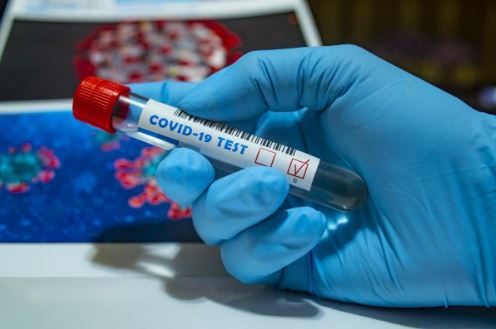 As we transition back to a new normal working routine, actions must be taken to protect the health of our workforce. By following the safe work practices below, worker exposures to COVID-19 can be minimized.
As we transition back to a new normal working routine, actions must be taken to protect the health of our workforce. By following the safe work practices below, worker exposures to COVID-19 can be minimized.
- Encourage workers to stay home if they are sick or have symptoms such as fever, coughing, or shortness of breath.
- Implement a daily screening process consisting of temperate checks and/or health questionnaires.
- Take measures to ensure social distancing is being observed, such as:
- Stagger start and stop times to avoid close contacts around exits and in parking areas.
- Consider extra shifts or modified schedules to keep numbers down at any given time.
- Develop guidelines to prevent congestion in and around breakrooms and restrooms.
- Develop guidelines for pedestrian traffic such as one-way traffic in aisles and walkways.
- Refrain from conducting in-person group meetings. Keep essential meetings (such as safety briefs) as short as possible and ensure social distancing.
- Require employees to go to their own vehicle during breaks to help prevent employees congregating in one place.
- Encourage workers to wear masks over their nose and mouth to prevent them from spreading the virus.
- Continue to use other normal control measures, including personal protective equipment (PPE), necessary to protect workers from job hazards associated with normal activities.
- Advise workers to avoid physical contact with others and direct employees/contractors/visitors to increase personal space to at least six feet, where possible. No Handshaking.
- If work trailers are used, all workers should maintain social distancing while inside the trailers.
- Train employees on proper PPE usage prior to work resuming.
- Encourage respiratory etiquette, including covering coughs and sneezes with elbows.
- Promote personal hygiene and implement a handwashing schedule. If workers do not have immediate access to soap and water for handwashing, provide alcohol-based hand rubs containing at least 60 percent alcohol.
- Keep all commonly touched items clean and sanitized. Develop a surface cleaning schedule and consider designating a person(s) to perform such cleaning. Commonly touched items may include: tools, equipment, phones, office equipment, doorknobs, desk drawers, steering wheels on forklifts, keypads, credit card readers in retail settings, etc. Consider utilizing a checklist to track cleaning efforts.
- When tools or equipment must be shared, provide and instruct workers to use alcohol-based wipes to clean tools before and after use. Ensure these measures are in accordance with manufacturer recommendations for proper cleaning.
- Clean and disinfect break areas, restrooms, and portable job site toilets regularly.
- Hand sanitizer dispensers should be filled regularly.
- Develop a protocol for visitors and vendors.
- Have a plan for employees who become ill at work.
- Encourage workers to report any safety and health concerns.
- Train employees on the new work practices prior to resuming operations and communicate frequently. Consider posting guidelines in prominent locations.
KEMI does not assume liability for the content of information contained herein. Safety and health remain your responsibility. This information is to be used for informational purposes only and not intended to be exhaustive or a substitute for proper training, supervision or manufacturers’ instructions/recommendations. KEMI, by publication of this information, does not assume liability for damage or injury arising from reliance upon it. Compliance with this information is not a guarantee or warranty that you will be in conformity with any laws or regulations nor does it ensure the absolute safety of any person, place or object, including, but not limited to, you, your occupation, employees, customers or place of business.

